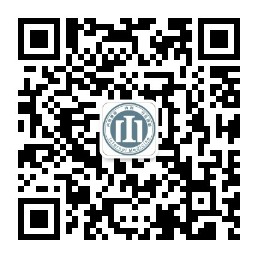目的 基于网络药理学和分子对接技术探讨桃红四物汤治疗白癜风的机制。方法 通过中药系统药理学数据库与分析平台、PubChem、SwissTargetPrediction数据库及文献筛选出桃红四物汤的活性成分和潜在靶点,采用GeneCards、DrugBank、TTD数据库筛选疾病相关靶点,通过UniProt数据库标准化靶点蛋白基因名称。在潜在靶点和疾病相关靶点间取交集,应用Cytoscape 3.7.1软件构建“成分-靶点”网络图;应用STRING数据库获取交集靶点的蛋白质-蛋白质相互作用(PPI)网络图,运用Cytoscape 3.7.1软件可视化网络图并进行拓扑分析。应用DAVID数据库对关键靶点进行基因本体(GO)富集分析及京都基因和基因组百科全书(KEGG)通路富集分析。采用分子对接技术对主要活性成分与关键靶点进行验证。结果 共筛出59个潜在活性成分,得到20个桃红四物汤治疗白癜风的潜在靶点。“成分-靶点”网络图中degree值排名前三的成分依次为:槲皮素,有12个作用靶点;山柰酚,有8个作用靶点;木犀草素,有7个作用靶点。PPI网络图中degree值最高的前3个关键靶点分别为丝氨酸/苏氨酸激酶1(AKT1)、乙酰胆碱酯酶(AChE)和髓过氧化物酶(MPO)。GO富集分析最终筛选出24个条目,其中生物过程13条、分子功能8条、细胞组成3条;KEGG通路富集分析共筛选出3条通路:胰岛素抵抗通路、胆碱能突触通路、糖尿病心肌病通路。分子对接结果显示,槲皮素、山柰酚、木犀草素与AKT1、AChE、MPO均显示出较好的结合活性。结论 桃红四物汤治疗白癜风具有多成分、多靶点、多途径的特点,可能通过槲皮素、山柰酚、木犀草素等活性成分作用于AKT1、AChE、MPO等靶点,调控胰岛素抵抗通路、胆碱能突触通路、糖尿病心肌病通路,从而发挥治疗白癜风的作用。
内科 页码:62-69
作者机构:江西省抚州市中医医院(江西中医药高等专科学校附属医院),抚州市 344000
基金信息:江西省抚州市社会发展指导性科技计划项目(抚科社字〔2022〕9号-58)
- 中文简介
- 英文简介
- 参考文献
Objective To explore the mechanism of Taohong Siwu Decoction in the treatment of vitiligo based on network pharmacology and molecular docking technology. Methods The active ingredients and potential targets of Taohong Siwu Decoction were screened out among the Traditional Chinese Medicine Systems Pharmacology Database and Analysis Platform, PubChem database, SwissTargetPrediction database, and relevant literatures, the GeneCards, DrugBank, and TTD databases were used to screen disease-related targets, and the UniProt database was used to standardize the gene names of the target proteins. Intersection of the potential targets and the disease-related targets was taken, and the Cytoscape 3.7.1 software was used to construct a "component-target" network diagram; the STRING database was used to obtain the protein-protein interaction (PPI) network diagram of the intersectional targets, and the Cytoscape 3.7.1 software was employed to visualize the network diagram and conduct topological analysis. The DAVID database was used to perform Gene Ontology (GO) enrichment analysis and Kyoto Encyclopedia of Genes and Genomes (KEGG) pathway enrichment analysis on the key targets. The main active ingredients and key targets were verified by molecular docking technology. Results A total of 59 potential active ingredients were screened out, and 20 potential targets for Taohong Siwu Decoction in the treatment of vitiligo were obtained. In the "component-target" network diagram, the components with the top three degree value were as follows: quercetin, with 12 action targets; kaempferol, with 8 action targets; and luteolin, with 7 action targets. In the PPI network diagram, the key targets with the top three degree value were serine/threonine-protein kinase 1 (AKT1), acetylcholinesterase (AChE), and myeloperoxidase (MPO). A total of 24 items were screened out by GO enrichment analysis, including 13 biological processes, 8 molecular functions, and 3 cell components. A total of 3 pathways were screened out through KEGG pathway enrichment analysis: the insulin resistance pathway, the cholinergic synapse pathway, and the diabetic cardiomyopathy pathway. The results of molecular docking showed that quercetin, kaempferol, and luteolin all exhibited good binding activities with AKT1, AChE, and MPO. Conclusion In the treatment of vitiligo, Taohong Siwu Decoction is characterized by multiple components, multiple targets, and multiple pathways. It may exert its therapeutic effect on vitiligo through acting on targets such as AKT1, AChE, and MPO by its active components like quercetin, kaempferol, and luteolin and regulating the insulin resistance pathway, cholinergic synapse pathway, and diabetic cardiomyopathy pathway.
-
无




 注册
注册 忘记密码
忘记密码 忘记用户名
忘记用户名 专家账号密码找回
专家账号密码找回 下载
下载 收藏
收藏
